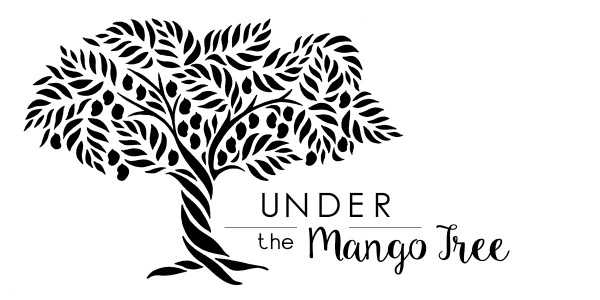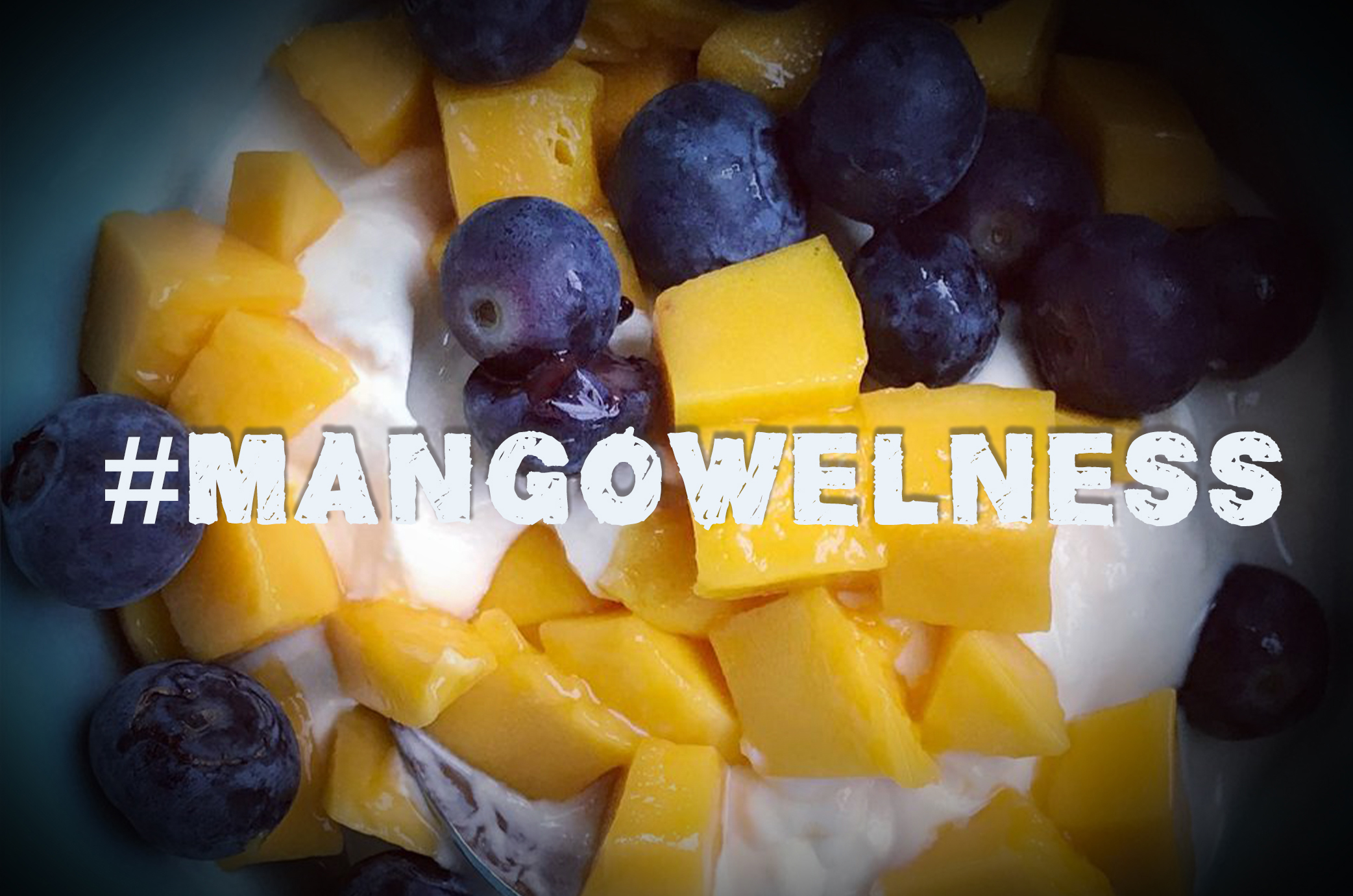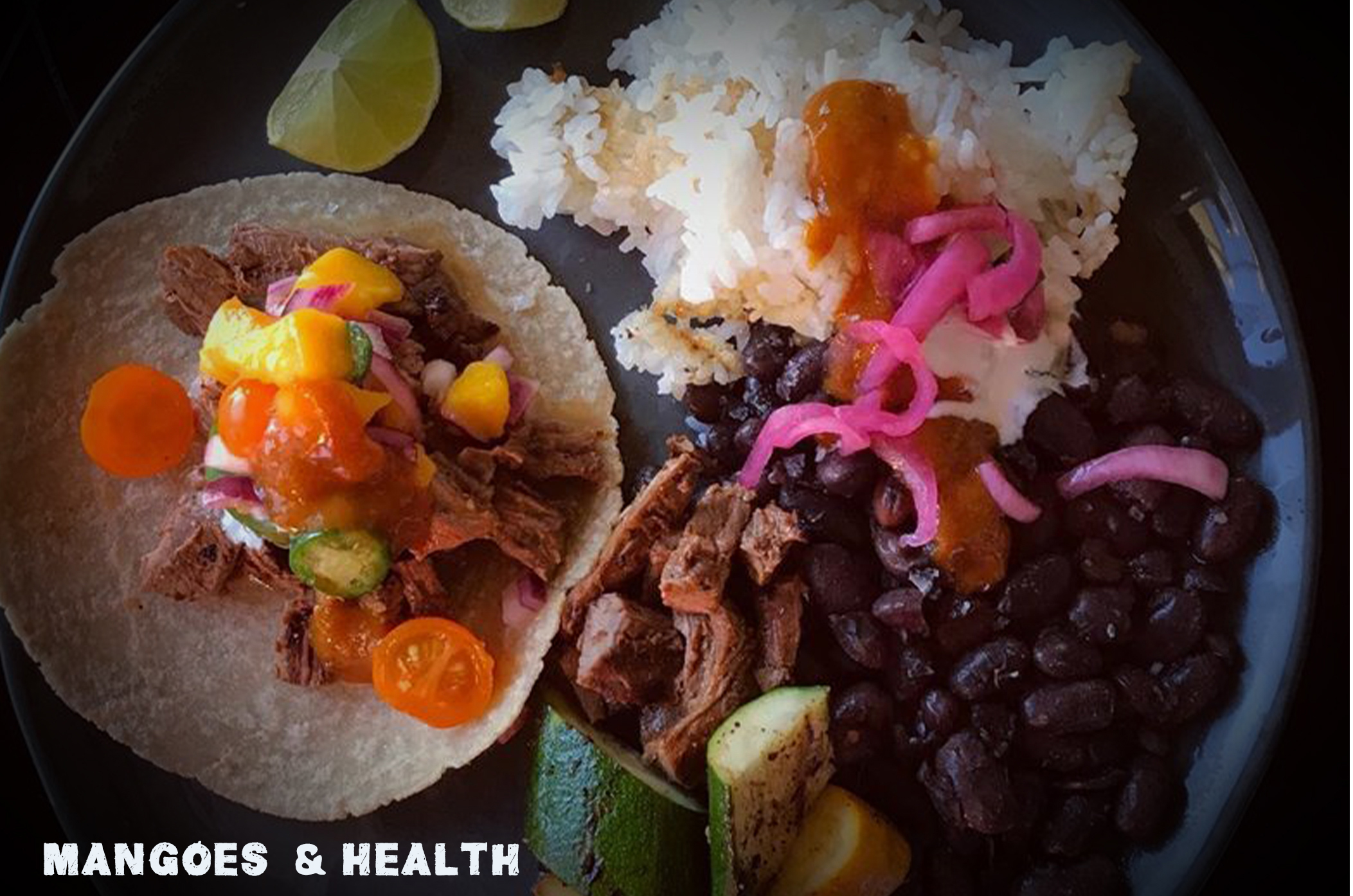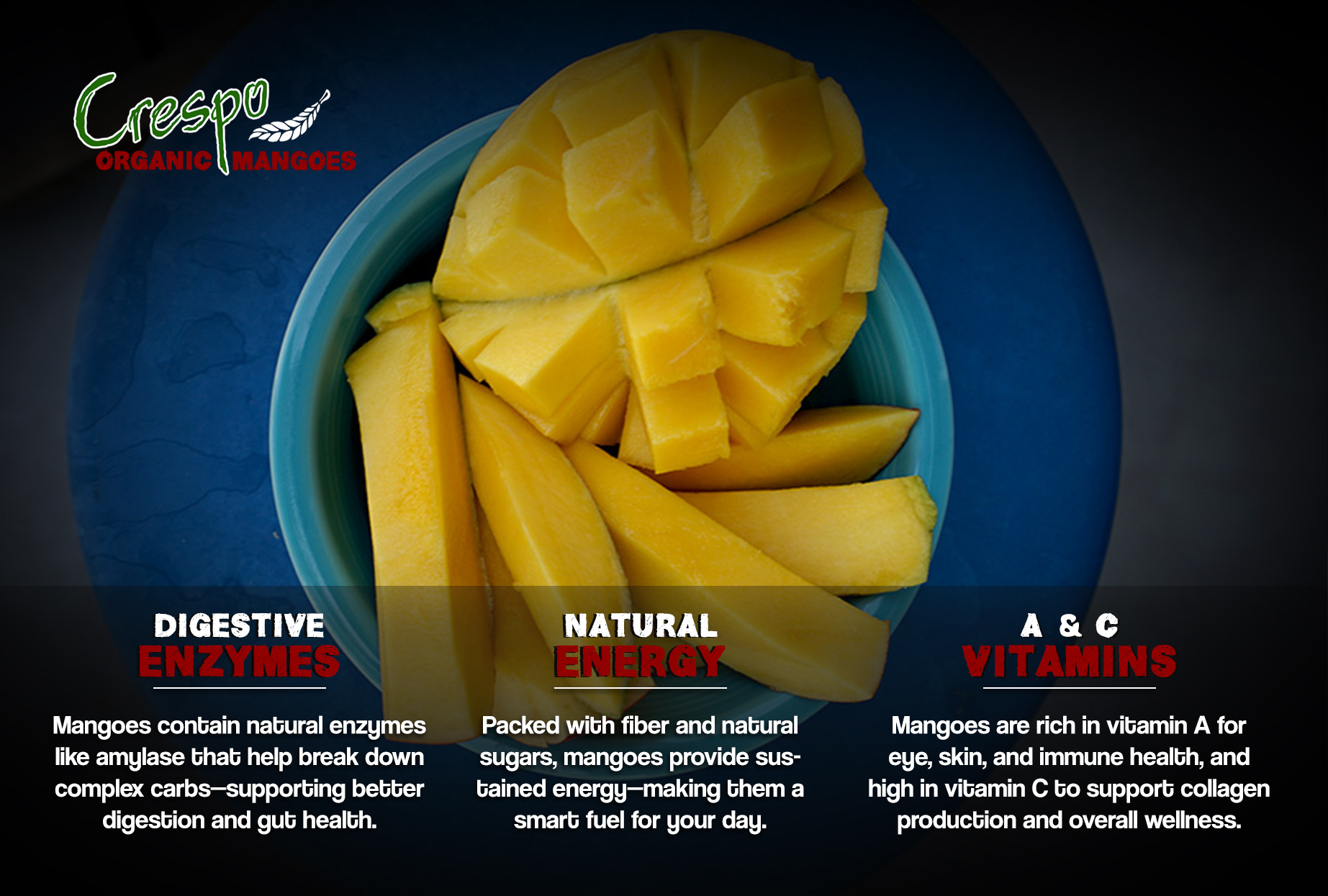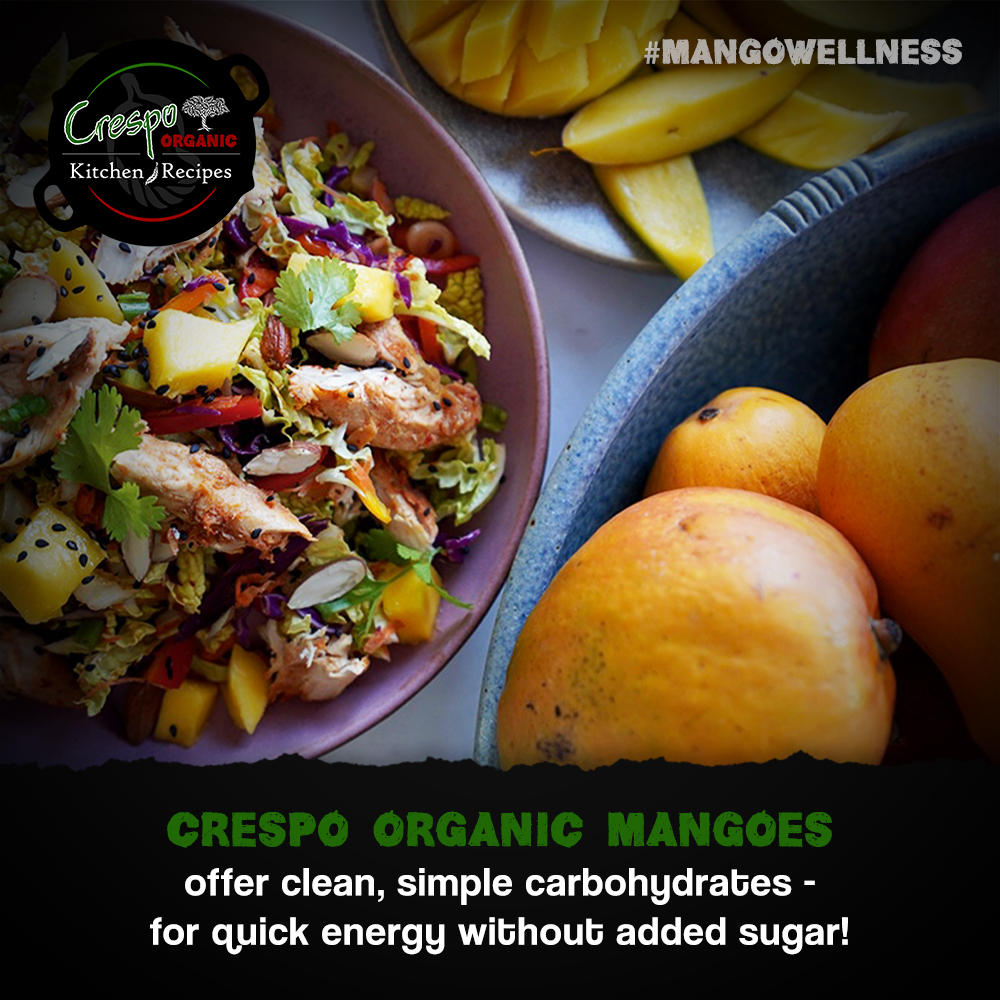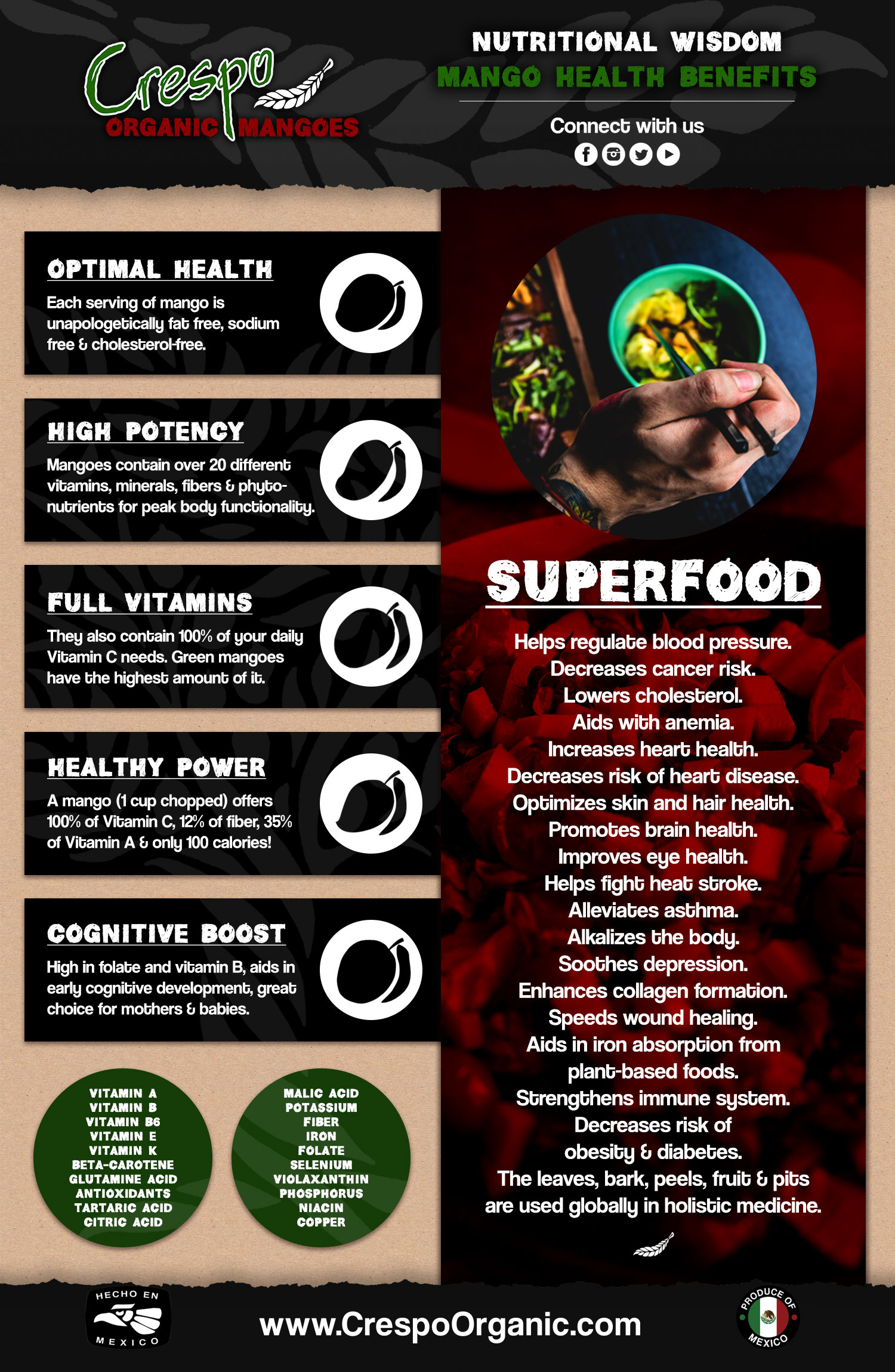Mango Wellness
Holistic nutrition and well-being is rooted in healthy organic food systems
People often ask why I don’t place more emphasis on mango nutrition, especially after years of advocating for mangoes. The truth is much of what gets labeled as “nutritional fact” is shaped by marketing and the pressure to sell something. That’s never sat well with me. I believe deeply in holistic nutrition and good health—rooted in the connection between grower and eater. I can’t reduce that relationship to a marketing hook or a list of nutrients.
My approach to healthy eating is both science- and common-sense-backed. It’s simple: eat mostly whole, fresh foods and cook your own food often. Choose a diversity of fruits and vegetables, eat lots of fresh herbs, spices, whole grains, nuts, seeds, and sustainably raised animal products.
I am supportive of plant-forward eating because it aligns with my belief in real, whole foods. The “plant-based,” path on the other hand, often feels more like a marketing label than a grounded nutritional philosophy—many of the products it promotes are highly processed, nutritionally lacking, and often sourced from conventional farming systems that don’t reflect a truly sustainable and holistic approach.
A holistic approach to health—one I share with many thoughtful nutrition and food experts—supports organic farming systems and the communities behind them. It values nutrient density, sustainability, and simplicity. Minimizing ultra-processed foods has long been a pillar of good health in the organic sector, well before it became the trendy talking point of the now.
One of the most overlooked aspects of health, in my experience as a culinary educator, is food literacy: learning about food itself. That includes understanding ingredients, how they’re grown, how to choose, store, and use them—and, most importantly, how to cook them. These basic skills empower people to eat better and feel better.
Good, healthy food is nourishment, yes. But it’s also story, connection, culture, and care.
I’m also a strong advocate for seasonal eating, especially when it comes to perishables. Fruits and vegetables are at their best when eaten in their natural seasons—closer to peak freshness and nutritional value. “In season” means grown near you, with the shortest possible path to your store or kitchen.
I’m not rigid—I make exceptions like anyone else. I’m a modern, practical woman who shops and lives in the real world, just like you. But common sense should still apply, especially when it comes to perishables. Olive oil, cheese, meat, and fish can be moved around with greater ease than produce. If we want to consider nutrition, flavor, and variety the most important offering to consumers, year-round scale mentality doesn’t jive with holistic nutrition.
Unfortunately, most decisions in the supply chain come down to money and scale—not health. But choosing seasonally and regionally grown produce not only improves quality and nutrition, it also supports sustainable farming and reduces supply chain manipulation.
Since the beginning of my culinary education career in Santa Monica, circa 1999—through the countless classes I taught at my Brooklyn cooking school, to the ones I still teach today (mostly for kids), and the hundreds of recipes I’ve written—I’ve seen that showing people how to cook real food and understand where it comes from is more powerful for developing healthy eating than any nutrition trend or label. A healthy, connected food chain has proven far more nourishing than the one the industry continues to try and cut short.
One of my favorite culinary programs was a seasonal produce education series I developed for Whole Foods Market in 2010 and 2011. Through Ger-Nis Culinary & Herb Center, I partnered with their produce team across the New York region to train floor staff on seasonality, offerings, and cooking. We ran the program season by season—spring, summer, fall, and winter—equipping team members with real food knowledge they could pass on to shoppers. It was a fully hands-on experience that included general commodity education, cooking tips and tricks, recipes, and tasting and eating. It wasn’t just team building—it was a holistic approach to reconnecting the chain. I thought it was incredibly forward-thinking then, and the impact and feedback I received still shape the way I work today.
When people learn to cook with fresh, whole ingredients, they naturally gravitate toward healthier eating—no sales pitch needed. The best nutrition advice I can offer—and the approach we’ve chosen in Ger-Nis’ marketing work for Crespo Organic—is simple: fresh, whole food reigns supreme. Selective data and marketing claims only distract from what truly matters: understanding food, embracing real nourishment, and supporting the systems and people behind it.
The Problem with Nutrition Marketing
Marketing boards play a huge role in shaping public perception, yet few prioritize organic farming. While they may fund valuable research, their primary goal is to increase market opportunities with a focus on conventional scale systems—which often means pushing farmers, especially in poorer global regions, toward unsustainable scale to meet American consumer demand. This frequently leaves farming communities poorer and more vulnerable. (Bananas are a great example.)
If you fund research on a fruit, you’ll find nutritional benefits—it’s how the nutrition marketing system works. But marketing boards rarely compare their commodities to others with similar benefits, because the goal isn’t just to prove their product is nutritious or how it works better in unison with other fruits/nutrients; it’s to make it the most desirable choice.
Take prunes, for example. They’re widely recognized for supporting digestive health—thanks to decades of research funded by the California Prune Board. But other fruits like kiwifruit, apples, pears, berries, figs, and apricots also support gut health through fiber, prebiotics, and polyphenols. The difference? Prunes dominate the conversation because they have an industry backing them.
A Different Approach to Mango Nutrition
My approach to marketing—and to mangoes—rejects short-term strategies and cherry-picked data. A truly functional, holistic food system demands transparency, fairness, and a commitment to quality and community. Consumers deserve the best-tasting, most nutritious fruit. Farmers deserve stable, healthy farming communities.
Yet, a volume-driven system often manipulates messaging to obscure the real impacts of scale—prioritizing market control over sustainability, and certainly over nutrition.
For over 20 years, I’ve shaped marketing narratives for global organic growers and brands—including the Crespo Organic mango brand—with a focus on authenticity and education. While marketing is about selling, it should also be a tool for truth and transparency.
A truly healthy food system supports both eaters and farmers. When farmers earn fair returns, they can invest in regenerative practices, soil health, and community well-being—resulting in better-quality food, greater biodiversity, and a more sustainable agricultural model. When consumers have access to seasonal, nutrient-rich food grown with integrity, their health benefits from the diversity and vitality of that food.
This is why I challenge systems that prioritize volume and market control over true nutrition. Mass-scale production—operating in more of a Hunger Games style, driven by market demand rather than natural growing cycles—often leads to fruit that falls flat in both flavor and nutritional value.
Real nutrition isn’t about isolated nutrients. It’s about the synergy of real food, grown with integrity.
Introducing #MangoWellness
In honor of this ethos, my team at Ger-Nis created a new campaign for Crespo Organic: Orchard to Table #MangoWellness—an initiative that goes beyond surface-level nutrition claims and marketing spin. Rooted in a true {organic}orchard-to-table philosophy, this campaign connects eater well-being to farmer well-being, with real nutritional insights woven throughout to show how a healthy food system is built on connection.
April is now officially Mango Wellness Month—a perfect alignment with spring’s energy of renewal, growth, and vibrant change. As nature awakens, it’s the ideal time to refocus on health and nourishment. Nutrition is the foundation of wellness, but it’s more than just numbers on a label. How food is grown directly impacts its nutrient density, flavor, and ability to truly nourish. A healthy food system feeds both people and planet.
In an era of superfood trends and gimmicky wellness marketing, we often overlook the simple truth: whole foods inherently offer essential nourishment.
As part of the campaign, Crespo Organic Kitchen will offer more than mango nutrition facts. We’ll explore the deep relationship between farmer health, soil health, and the nutrient density of our food. We’ll highlight how mangoes—paired with other organic fruits and vegetables, whole grains, nuts, seeds, sustainably raised animal products, and plant-based ingredients—form an ecosystem of optimal health. Through recipes, expert insights, practical tips, and interviews, we’ll offer real, science-backed guidance on how to incorporate organic mangoes into a healthy, balanced lifestyle.
Mango Wellness, like the organic sector itself, is rooted in a holistic approach—bringing transparency and integrity back to the nutrition conversation. Organic mangoes embody the connection between nutrition, sustainability, and flavor. And this April, Mango Wellness Month will tell that story more deeply.
Because in the end, #MangoWellness is just another expression of #MangoJoy.
Look for Crespo Organic’s April Mango Wellness Month campaign on Instagram, LinkedIn, and in our newsletters. You’ll find virtual education tools to share with consumers, plus fresh in-store #MangoWellness POS materials designed to educate, excite, engage, and entice mango and wellness lovers alike. We’ve also got some juicy interviews lined up—covering nutrition, cooking, and the vital connection between orchard and eater. Stay tuned!
